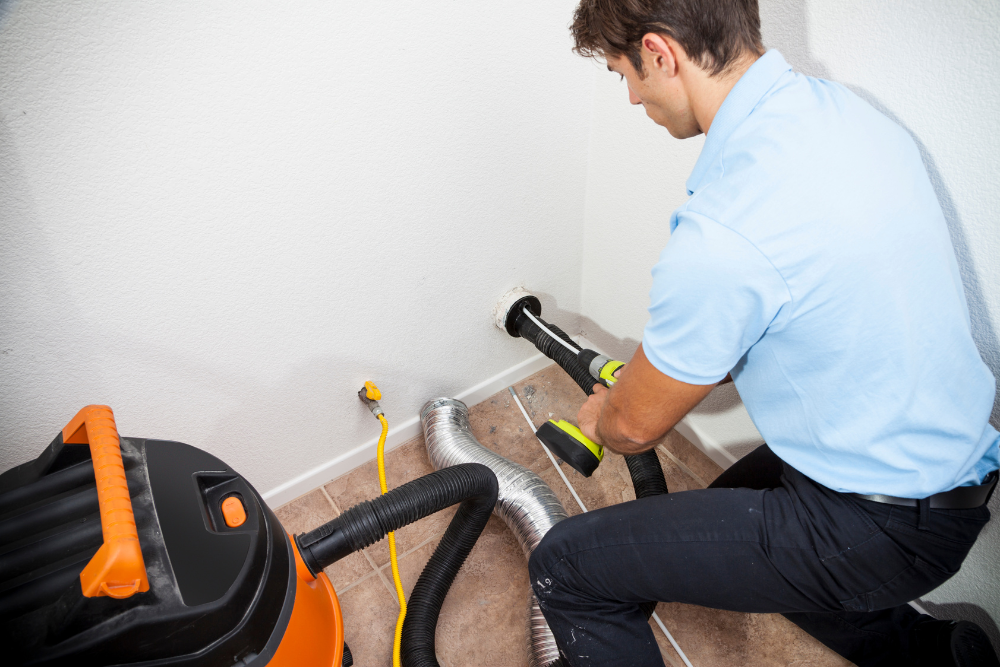If your dryer is tearing your clothes, it can be due to a variety of issues related to the appliance’s parts. In this article, we will investigate three common culprits that we usually find during our dryer repair service calls: the dryer drum seal, the dryer drum glides, and the drum support rollers.
Opening Your Dryer Cabinet
You will need to open your dryer cabinet to troubleshoot the reason your dryer is tearing your clothes. While the specifics can vary depending on the brand and model of your dryer, here’s a general guide on how to open a dryer cabinet:
Materials Needed: Screwdriver, Putty knife
Unplug the Dryer
Always unplug the machine from the wall outlet before starting any work on it to avoid electric shock.
Remove the Top Panel
Many dryers have screws at the back that hold the top panel in place. Using your screwdriver, remove these screws. After you’ve removed them, slide the top panel towards the back and then lift it off.
Remove the Control Panel
Some models have the control panel mounted on the top. If this is the case, you’ll need to remove it. There are typically a few screws holding it in place, either on the top or at the back.
After removing these screws, carefully lift the control panel off and set it aside. Be cautious of any attached wires. Make a note of where they go and then disconnect them.
Remove the Front Panel
In many models, you’ll find two screws either inside the door or just under the lip of the front panel. Remove these screws, and then use a putty knife to release the spring clips holding the front panel in place. You can usually find these at the top corners.
Push the putty knife into the gap between the top and front panels about 2-3 inches from the corner, then push in and up to release the clip. Do this on both sides.
Lift the front panel up and off the dryer once the clips release. Be careful of the door switch wires. If necessary, disconnect them.
Remove the Drum
After removing the front panel, you will be able to see the drum. Usually, there is a belt around the drum connected to the motor. Take a picture or make a note of how the belt is threaded for reassembly. Push the tensioner away from the belt to loosen it, and then remove the belt from the drum. Once the belt is off, you can lift the drum out of the dryer.
Remember that each dryer is a little different, so your dryer might not follow these steps exactly. If you can’t figure out how to open your dryer cabinet, or if you’re not comfortable doing so, schedule an appointment with our dryer repair technicians. Always prioritize safety when dealing with appliances.
Common Dryer Drum Seal
The front and rear seal of your dryer could be responsible for your clothes coming out torn. These seals keep clothes from getting between the drum and the front or rear wall of the dryer. If they wear or tear, your clothes may get lodged between the drum and the walls. The clothes tear as the drum continues to turn. To identify this issue, you’ll need to remove the drum and inspect the seals. If the seals are worn, replace them.
Dryer Drum Glides
Defective glides could also be the reason your dryer is tearing your clothes. These glides support the drum towards the front of the dryer. Over time, they can wear, causing the drum to sag toward the front. This creates a pinch point at the top of the drum, which can tear clothes. If you suspect this to be the case, you’ll need to remove the drum and replace the entire set of glides.
Drum Support Rollers
The third possible cause of torn clothing could be defective drum support rollers. These rollers support the drum at the back of the dryer. Wear over time can lead to a sagging drum and another potential pinch point, which can tear clothes. If the drum support rollers are defective, you’ll need to replace them. As with the seals and glides, you’ll have to remove the drum to do this.
Regular maintenance of your dryer’s components can prevent damage to your clothes. If you notice that your clothes are tearing, don’t ignore the issue. Check the three areas mentioned above and replace any worn-out parts. Remember to always take safety precautions when dealing with electrical appliances.
If you’re not confident in performing these tasks yourself, it’s best to reach out to us for a trained dryer repair technician. Use the handy form below to see if we have a technician in your service area.






